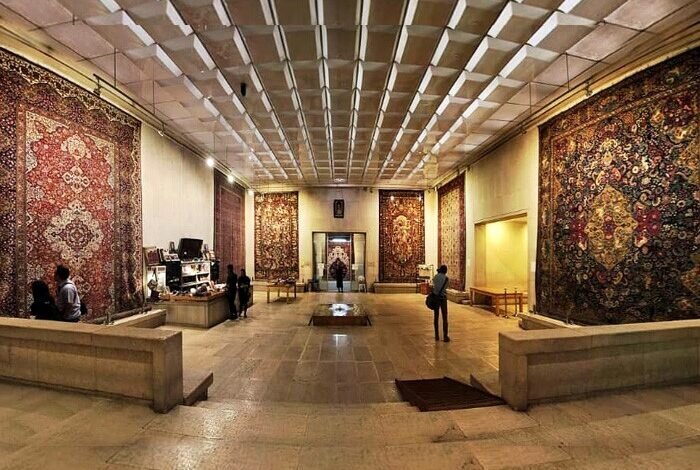TEHRAN - The Iran Carpet Museum hosted a ceremony unveiling two exquisite Safavid-era carpets, drawing the attention of over 150 scholars, artists, and carpet enthusiasts.
Held in the Pazyryk Hall of the museum, the event featured an in-depth presentation by prominent carpet researcher and educator Touraj Zhouleh, who provided detailed insights into the intricate beauty and historical significance of the Safavid carpets, Mehr reported on Saturday.
Highlighting the value of hand-woven carpet workshops, Zhouleh emphasized the role of advanced technologies in enhancing participants' understanding through immersive, multi-sensory experiences.
The expert also traced the origins of carpet studies to the mid-19th century, crediting European scholars as pioneers in the field. He noted that American researchers later expanded this discipline by employing fieldwork techniques to introduce tribal and rural carpets to the global art community.
“Carpet studies go beyond technical analysis,”Zhouleh remarked, “encompassing the deep connections between history, culture, society, and beliefs. Safavid carpets, in particular, exemplify the flourishing of art and culture during this period.”
The two Safavid carpets will be on display at the Iran Carpet Museum until January 19, 2025, offering visitors a chance to marvel at these masterpieces of Persian artistry.
Attendees described the unveiling as a memorable moment that celebrated the artistry of this remarkable era.
Glimpses of Persian carpet
Persian carpets are sought after internationally, with patterns of Persian garden being arguably the most characteristic feature of them all. Weavers spend several months in front of a loom, stringing and knotting thousands of threads. Some practice established patterns. Some make their own.
Each Persian carpet is a scene that seems ageless, a procedure that can take as long as a year. These efforts have long put Iran’s carpets among the most complex and labor-intensive handicrafts in the world. When the weaving is finally done, the carpet is cut, washed, and put out in the sun to dry.
Throughout history, invaders, politicians, and even enemies have left their impact on Iran’s carpets. As mentioned by the Britannica Encyclopedia, little is known about Persian carpet-making before the 15th century, when art was already approaching a peak.


No comments:
Post a Comment